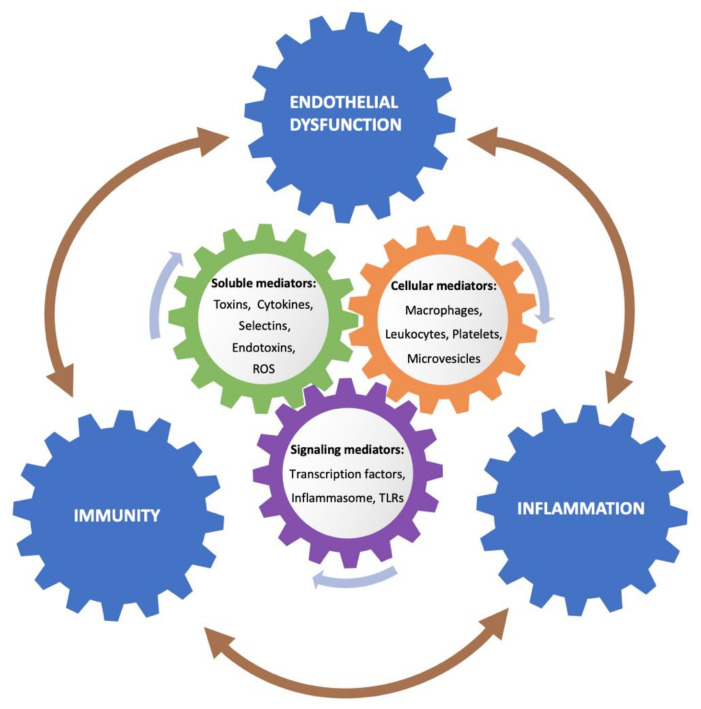Figure 2.
The mechanisms summarized inside the cycle do not correspond exclusively to the interaction between two processes, but may be implied to different extent in development of other alterations. Exposure of the endothelium to the uremic milieu leads to a cross-talk between inflammation, immunity and endothelial activation through several mediators. The uremic media consists of soluble factors secreted by cells and tissues to the circulation, such as cytokines, adhesion receptors, coagulation proteins, and selectins; products are derived from the uremic state or induced by renal replacement therapy (RRT), such as endotoxins and toxins, and from an increased oxidative stress, such as reactive oxygen species (ROS). Cellular response involves macrophages and leukocytes, and to a lesser extent platelets and circulating microvesicles secreted from injured cells. In this orchestrated response, signaling mediators play a role, with activation of transcription factors, engagement of inflammasome NALP3, and Toll-like receptor 4 (TLR4) overexpression, promoting further activation of proinflammatory mediators.

